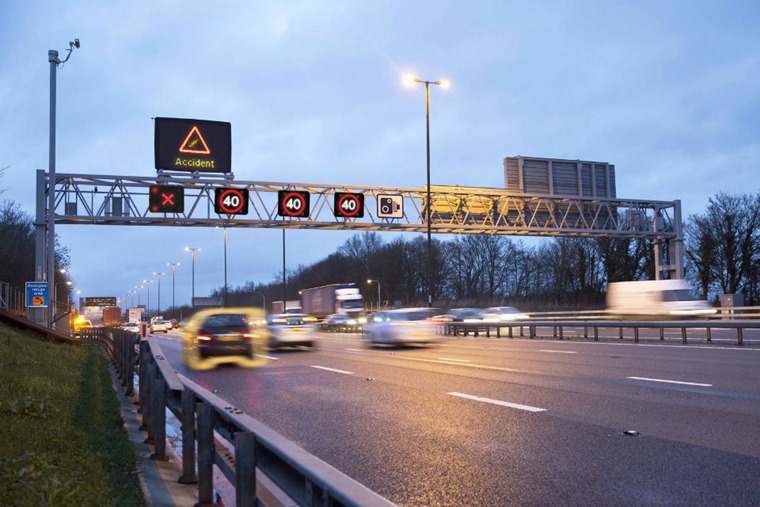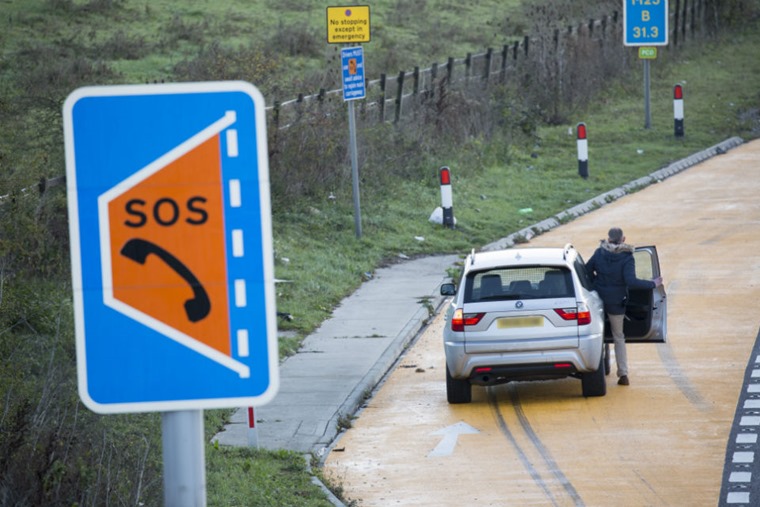All upcoming smart motorways CANCELLED over safety concerns
All plans for upcoming smart motorways have been cancelled by the government following concerns over safety and costs.
14 new smart motorways had been planned, with 11 of them already paused following investigations into their safety; campaigners have consistently claimed that losing hard shoulders has led to an increase in collisions and road deaths.

As well as the cancellation of any upcoming schemes, the existing smart motorways will undergo a “safety refit”, with more than 150 more emergency stopping places and an audit of the technology due to take place.
Aside from the safety implications, the government claims that the scrapped plans would have cost £1bn, and cancelling them would allow time to further track public trust in them over a longer period.
Why have smart motorway plans been scrapped?
Smart motorways have been in the news several times over the last few years, and not for the right reasons. A recent Panorama episode investigated whether the UK’s motorways are becoming more dangerous with the removal of hard shoulders.
Over the course of the show, a Freedom of Information request from Panorama revealed 38 people have been killed on smart motorways in the last five years. Similarly, incidents where there was the potential to cause injury or ill heath, rose from 72 to 1,485 in the same period.

Asked by LBC’s Nick Ferrari whether she would “stop smart motorways” if she became PM, Ms Truss replied with a simple “Yes”. But what does that actually mean? What are smart motorways anyway? Here’s everything you need to know.
What is a smart motorway anyway?
Rather than your atypical motorway which uses the national speed limit at all times (barring an accident), a smart motorway uses variable speed limits as a way to manage and monitor traffic levels in order to reduce congestion. Some also use the hard shoulder as an additional lane to keep traffic flowing and to account for increased capacity on busy sections of the motorway network.
A smart motorway falls into three categories.
The three types of smart motorway
Smart motorways come in three types: controlled, dynamic and all-lane:
Controlled motorways: Three or more lanes are beholden to variable speed limits and the hard shoulder can only to be used in an emergency. The variable speed limits are displayed on a live overhead gantry and if nothing is displayed the national speed limit is in effect.
It is imperative you pay attention to the gantry speed limits as they are enforced by speed cameras. There is a 60 second grace period between when the limit displayed is changed to allow drivers to reduce their speed gradually.
Dynamic hard shoulder: This involves opening the hard shoulder for use as an additional lane to ease congestion at busy periods. The overhead gantry will display and direct you as to whether the hard shoulder is open for use or not. If the sign above the hard shoulder is blank or displays a red X it cannot be used as a driving lane.
All-lane running: Perhaps the most controversial type of smart motorway, this scheme permanently removes the hard shoulder in order to convert it into a permanently open lane for traffic. Should a driver break down or have an accident, they are expected to try and reach an emergency refuge area on the carriageway.
What do people do if they break down?

Depending on the above, if you break down on a controlled smart motorway, simply move onto the hard shoulder safely with your hazard warning lights on.
If you break down when the dynamic hard shoulder isn’t in use, again treat it like you would a hard shoulder on a regular motorway. If the hard shoulder is in use, try to make it to an emergency refuge area – these are spaced out on average by one and a half miles.
If you break down on an all-lane running smart motorway, again try to make it to an emergency refuge area and exit via the passenger door.
If you can leave your vehicle safely, contact Highways England via the roadside emergency telephone provided in all emergency refuge areas. If it is not possible to get out of your vehicle safely, then you should dial the emergency services and keep your seatbelt on for protection.
Once the regional traffic control centre is aware of your situation, they can use the smart motorway technology to set overhead signs and close the lane to help keep traffic away from you. They will also send a traffic officer or the police to help you.
What is an emergency refuge area?
On dynamic and all-lane smart motorways, emergency refuge areas are marked with blue signs featuring an orange SOS telephone symbol on them. These are spaced, on average, every one and a half miles.
What are the smart motorway speed limits?
The same laws for a regular motorway apply for a smart motorway, but with variable speed limits and more cameras monitoring traffic, unless you’re paying attention the chance of being caught speeding grows.
As stated earlier, if the gantry displays a 40, 50 or 60mph limit you must adhere to it. If no special speed limit is displayed then the national speed limit applies.
This is another thing that Truss says she would review if she becomes PM. Commenting on variable speed limits, she commented: “On speed limits, Id be prepared to look at that. I can’t give you a precise answer on that point. But I do believe the smart motorways experiment hasn’t worked”.
What do I do if my lane has a red X above it?
One of the most important signs to get to know on a smart motorway is the red X. This indicates that a lane is closed.
A lane might be closed for any number of reasons such as debris in the road, or because of a person or animal on the road. There may be an accident or a breakdown up ahead and they may be keeping the lane clear for the emergency services.
If you see a red X closing a lane, move out of that lane promptly and safely. If you don’t, you may receive a fine.
Quick smart motorway tips to remember
- never drive in a lane closed by a red X
- keep to the speed limit shown on the gantries
- a solid white line indicates the hard shoulder - don’t drive in it unless directed by the overhead gantry.
- a broken white line indicates a normal running lane
- if your vehicle experiences difficulties, eg warning light, exit the smart motorway immediately if possible
- use the refuge areas for emergencies if there’s no hard shoulder
- put your hazard lights on if you break down
Do smart motorways actually work?
While concerns have been raised on the dangers of blanket speed limits – for example if everyone is doing 40mph how are you supposed to get over two lanes of traffic to reach your exit without speeding past? – with the above fatality number exposed by Panorama they have come under increasing scrutiny.
All-lane running smart motorways and their lack of a hard shoulder certainly seem to be the biggest cause for concern, and resulted in the death of Jason Mercer in 2019.
He was involved in a minor collision but when he got out his car to exchange details he and the other driver were both hit by a lorry and died. The widow of Mr Mercer is now suing Highways England for corporate manslaughter saying they failed to provide her husband with a safe refuge.
Jim O'Sullivan, Chief Executive of Highways England, has even said himself that smart motorways are too complicated for drivers and that he didn’t think anymore would be built. It turned out he might just be right.
